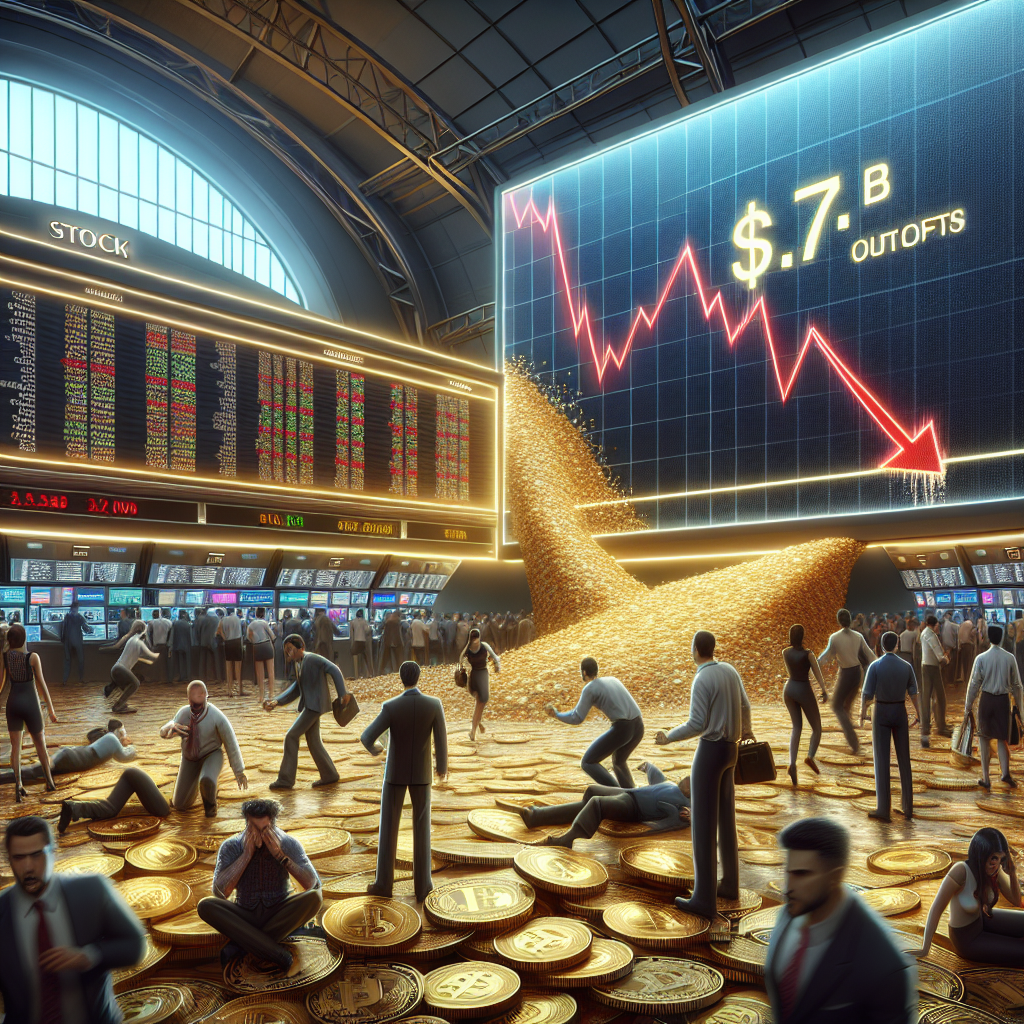Crypto ETPs Experience Record $1.7B Outflows Over Five Weeks
The world of cryptocurrency investment is ever-evolving, and recent trends in exchange-traded products (ETPs) highlight significant shifts in investor sentiment. A striking statistic has emerged: over a span of five consecutive weeks, cryptocurrency ETPs have faced a staggering outflow of $1.7 billion. This trend raises critical questions about the current state of the crypto market and the factors contributing to such significant withdrawals.
The Current Landscape of Crypto ETPs
Cryptocurrency ETPs provide investors with an accessible route into the volatile world of digital currencies, allowing them to invest in a diversified portfolio without needing to hold the actual cryptocurrencies themselves. Despite their appeal, the recent outflows suggest a growing caution among investors.
Here are some key aspects to consider about the current landscape:
Analyzing the $1.7B Outflow
The recent report regarding the $1.7 billion outflow from crypto ETPs over five weeks is particularly troubling as it marks the fifth consecutive week of withdrawals. Understanding the root causes of this trend can provide valuable insights into the market dynamics at play.
Market Volatility
One of the primary drivers of investor behavior in the cryptocurrency market is volatility. Over the last few weeks, the market has experienced significant fluctuations, prompting investors to reassess their positions. Increasing uncertainty around regulatory measures and market performance can lead to panic selling, as seen in the current outflow trends.
Regulatory Concerns
As global regulatory frameworks begin to clamp down on cryptocurrencies, investors may feel apprehensive. New guidelines can alter the appeal of crypto investments, triggering mass withdrawals. Key areas of focus include:
Shift in Investor Sentiment
With the combination of market volatility and regulatory challenges, many investors are turning to more traditionally secure investments. As returns on crypto investments prove uncertain, a movement back to equities or bonds may emerge as a safer option. Factors contributing to this shift include:
Long-Term Implications for ETPs
The consecutive outflows from crypto ETPs raise larger questions about the sustainability and future of these investment products in the current market climate.
Potential Recovery Strategies
To regain investor confidence and curb the outflows, there are several strategies that ETP providers can implement:
Future of Crypto ETPs
While $1.7 billion in outflows presents a clear challenge, it does not signal the end of cryptocurrency ETPs. Historically, the crypto market operates in cycles; periods of declining investment are often followed by recoveries driven by renewed interest or technological advancements.
Factors that may revitalize interest include:
The Takeaway
The record $1.7 billion outflow from cryptocurrency ETPs over five weeks is a noteworthy trend that reflects a significant shift in investor sentiment. Various factors such as market volatility, regulatory concerns, and changing investor priorities have contributed to this outflow.
For crypto ETPs to redefine their standing in the investment landscape, a multifaceted approach that encompasses innovation, transparency, and educational initiatives will be essential. While the current situation poses challenges, it also creates an opportunity for development and evolution within the cryptocurrency investment sector.
Ultimately, staying informed about market dynamics and understanding investor behavior will be crucial for anyone interested in the future of cryptocurrency ETPs. As the digital currency landscape continues to evolve, adaptability and awareness will be key drivers for both investors and providers in navigating these turbulent waters.




